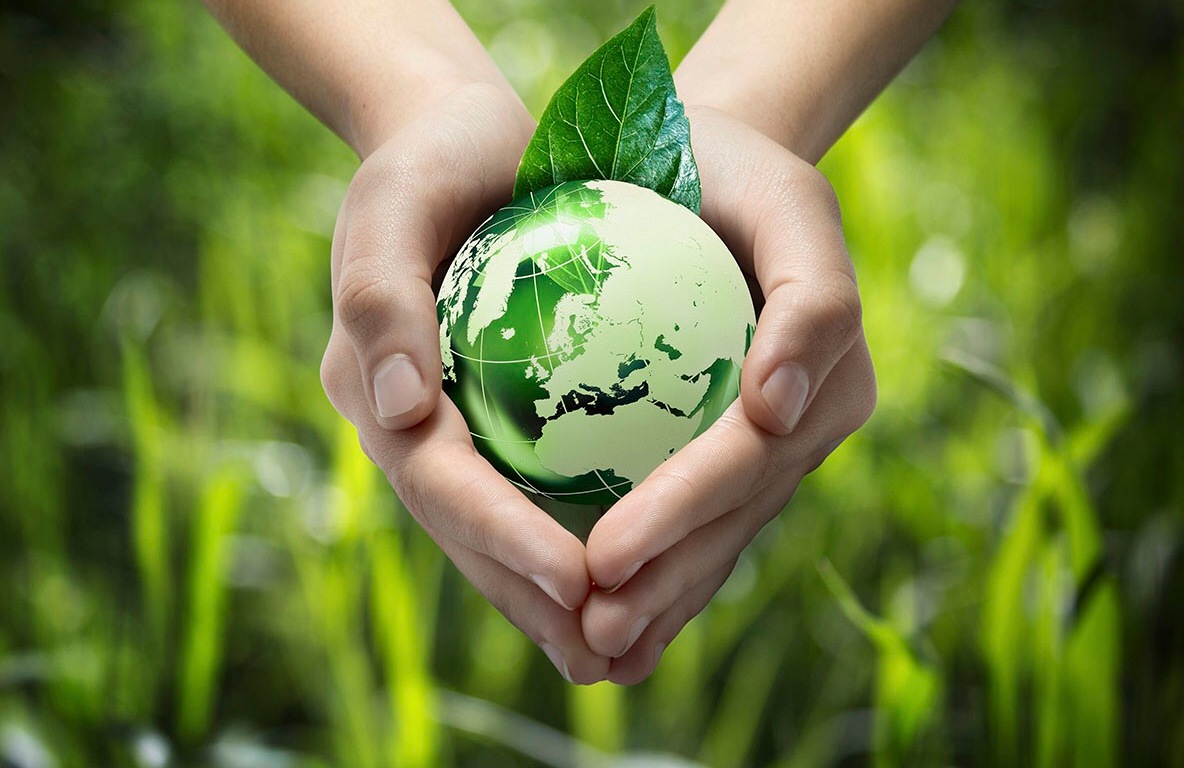It has come to my attention that there is way too much trash in the world, and those horror stories of the Earth exploding in a fiery pit of doom might actually come true. People say if you worry about the environment, you’re a hippie/tree hugger/idealist/bleeding heart. Uhhh yea, so what?
The truth is, we are messing this planet up, and it will affect us in the future. If not in our lifetime, then our grandchildren’s, or maybe even our children’s–that’s so scary! By just making small changes, we can make a difference for the future, and become healthier, more resourceful people. So here are my top ten tips on reducing your carbon footprint:
1. Compost
A countertop compost bin ($20) is compact and keeps food scraps out of the trash. Its design prevents odors or insects from invading your kitchen, and when it gets full, it can be dumped in your friendly local compost pile. You can also include dryer lint and food soaked paper towels (they break down with all of the other pieces).  We dug a little compost hole in the yard, and keep it covered with a log so animals don’t get into it too much. The compost created can be used in a garden– but be careful and make sure to turn it frequently and add water so it doesn’t spontaneously combust. Food waste creates methane gas when sent to landfills, so creating compost is good for your garden, and the environment!
We dug a little compost hole in the yard, and keep it covered with a log so animals don’t get into it too much. The compost created can be used in a garden– but be careful and make sure to turn it frequently and add water so it doesn’t spontaneously combust. Food waste creates methane gas when sent to landfills, so creating compost is good for your garden, and the environment!
2. Air Dry
Using a dryer creates a ton of CO2 which gets pumped out into the world. If you’re drying clothes 2-3 times a week, think about how much pollution that’s creating, and then multiply it by the other households. A simple solution? Hang a clothesline for use during the nice months. I love the way my clothes, sheets and towels smell and feel after air drying, and it satisfies my OCD to see them all hanging in a row. If you don’t have room for a full clothesline, you could hang a mini one, or use a drying rack. I have three that I use during the winter or on rainy days, and they collapse and hide away easily. 
3. Repurpose
Craig will throw away anything, so I find myself constantly digging in the trash to rescue boxes and bottles that could be jazzed up. Using cereal boxes and other random containers, I’ve been able to decorate and organize my whole craft room.
Cardboard boxes that might not make it to the recycling bin get covered in fabric (an old curtain in this case…double recycle!!) and become free storage bins: Bottles get painted (or not) and become vases:
Bottles get painted (or not) and become vases:

Old shoeboxes become the perfect photo storage containers:

People assume throwing something in the recycling bin is the ultimate solution, but according to research at Stanford University, only 60% actually gets recycled. If we can keep some things out of a landfill by beautifying and repurposing, the environment will thank us!
4. Bike, Don’t Drive
The amount of cars on the road contribute to at least 30% of the global warming emissions present in the atmosphere (USCUSA). Think about how many times you run your car just to run to the grocery store (or in my case, liquor store) a mile away. Hopping on a bike not only is environmentally friendly, but gives you an opportunity to work on your tan (wearing sunscreen of course!) and tone your legs. Win-win-win, I’d say. Invest in a cute basket or backpack, and go old school with a bell or horn to complete the look.
5. Go Veg…at least a little bit

Last year I decided to give a vegetarian lifestyle a whirl. At first, I did so well I couldn’t believe it. But then slowly I started to really miss the variety of proteins in my cooking routines. Now I make an effort to eat meat only 2-3 days a week, and stay veggie centric on the others. It’s nice because you can indulge a little bit, but keep it healthy and fresh. Some of my favorite meals are 3-bean chili, veggie spring rolls and cauliflower steaks. By eliminating one meat-filled meal from your weekly repertoire, you can reduce greenhouse gases and fuel required for raising so many animals (Meatless Monday).
6. Buy Locally
When I do shop for meat, I use a butcher in town that connects with local farms.
 They are great about telling you what’s fresh and the best ways to cook. Plus they’ve been in business for like a million years so they are experts at their craft. I live in an agricultural area, so I try to shop at local farms for things like eggs, cheese and produce. It’s cheaper and more environmental than running to the grocery store every week.
They are great about telling you what’s fresh and the best ways to cook. Plus they’ve been in business for like a million years so they are experts at their craft. I live in an agricultural area, so I try to shop at local farms for things like eggs, cheese and produce. It’s cheaper and more environmental than running to the grocery store every week.
7. Grow Your Own
I have a black thumb, but even I can grow an herb garden. Having fresh herbs on your porch is perfect for cooking, and you don’t have to spend $2.50 for a plastic package. Sage, rosemary and thyme require less water than other herbs, so they’re super sustainable. If you have any type of skill you can even grow your own vegetables…unfortunately my tomato plant died even though I followed all the instructions, so I don’t have a picture, but I did get one tomato before it withered. Someone give me some advice on gardening please! (There’s no picture here because all my stuff shriveled and died, so…yeah).
8. Use Reusable Bags
Plastic bags contribute to pollution in the environment. These adorable reusable totes from Vera Bradley cost $8 (a little pricey for a bag, but they hold a ton of items, and last for years.)
 And they’re cute. I try to remember to not only bring them to the grocery store, but also when I go to other stores like Target. When I was visiting the West Coast, most places didn’t even offer plastic bags, or charged a small fee. Occasionally I’ll collect some bags to use for recycling or traveling, so they can be useful, but all in moderation.
And they’re cute. I try to remember to not only bring them to the grocery store, but also when I go to other stores like Target. When I was visiting the West Coast, most places didn’t even offer plastic bags, or charged a small fee. Occasionally I’ll collect some bags to use for recycling or traveling, so they can be useful, but all in moderation.
9. Buy a Reusable Water Bottle
 1500 plastic water bottles are used every day, and more than half don’t make it to the recycling center. On top of that, the caps aren’t recyclable and end up in the stomachs of fish and other animals. There are glass water bottles ($8-$20) that are safer than the plastic ones that might contain BPA, easy to clean and super stylish.
1500 plastic water bottles are used every day, and more than half don’t make it to the recycling center. On top of that, the caps aren’t recyclable and end up in the stomachs of fish and other animals. There are glass water bottles ($8-$20) that are safer than the plastic ones that might contain BPA, easy to clean and super stylish.
10. Make Your Own Cleaning Products

Why spend money on expensive cleaning products when natural ones are probably right in your kitchen? I like to make a big batch of all purpose cleaner with 1 part water, 1 part vinegar and citrus peels (orange, lemon, lime, and grapefruit). Keep a jug in a dark cool place and use it to refill a spray bottle. Another great natural cleaner is baking soda. Combine with vinegar to scrub pots and pans, or clear a clogged drain. While you’re at it, invest in a compost able scrubbing brush to eliminate even more unnecessary waste. Using natural cleaners, along with being environmentally friendly, also ensures that your kids, pets and self are safe from the harsh chemicals usually present in cleaning products.
Making small lifestyle changes can make a huge difference for the future of our planet. We’ve all heard of reduce-reuse-recycle, but we need to focus on the first two to make a real impact. Evaluate your waste, use less, and use wisely. There are so many wonderful things in our world, and as cliche as it sounds, it really is our job to make sure future generations are able to enjoy all the wonders.

